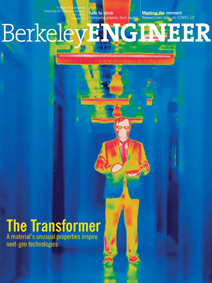
In the beginning
Despite big advances in biotechnology over the years, many questions remain on the first stages of fertilization and early development, when a single cell zygote develops into a complex, multicellular embryo. During this crucial period, researchers don’t have much biological material to work with, and examining the direct relationship between RNA, proteins and cells is a difficult task. But thanks to research by bioengineering professor Amy E. Herr and a team of engineers and cell biologists, scientists can now get a detailed, real-time look at the crucial period when genetic molecules like RNA instruct cells on what proteins to form.
To observe what’s happening with RNA and corresponding proteins at the same time and in the same cell, the researchers designed microfluidic chips to scrutinize and process single cells from mice, using microwells stippled into tiny gel pallets. So instead of watching an RNA molecule in one cell and then moving onto the related protein in another cell, scientists can simultaneously measure both substances at any given stage of the embryo and in that same cell. Such levels of precision could reduce the cost and number of research animals needed in developmental biology. The new technology could also help scientists better understand assisted reproduction technologies like in vitro fertilization, as well as lead to improved cancer treatments.
Read more: Scientists invent new ways to peer into the earliest stages of life

